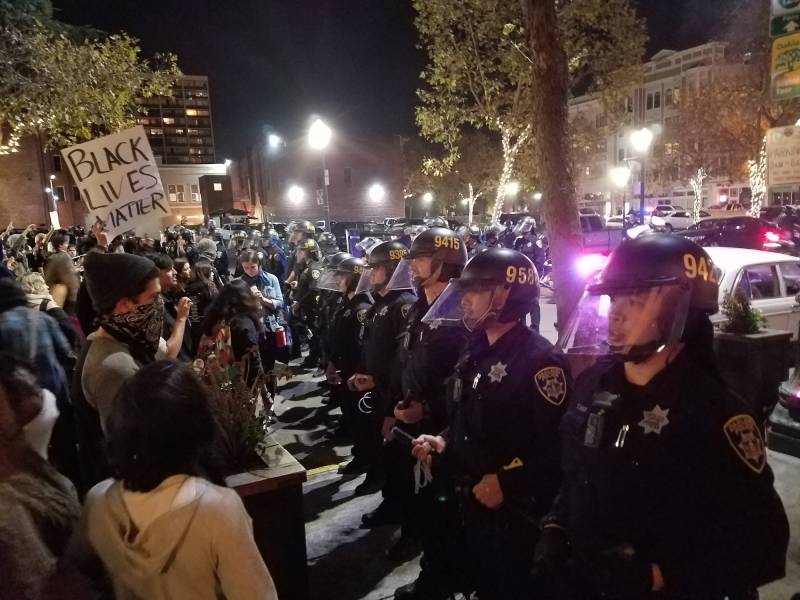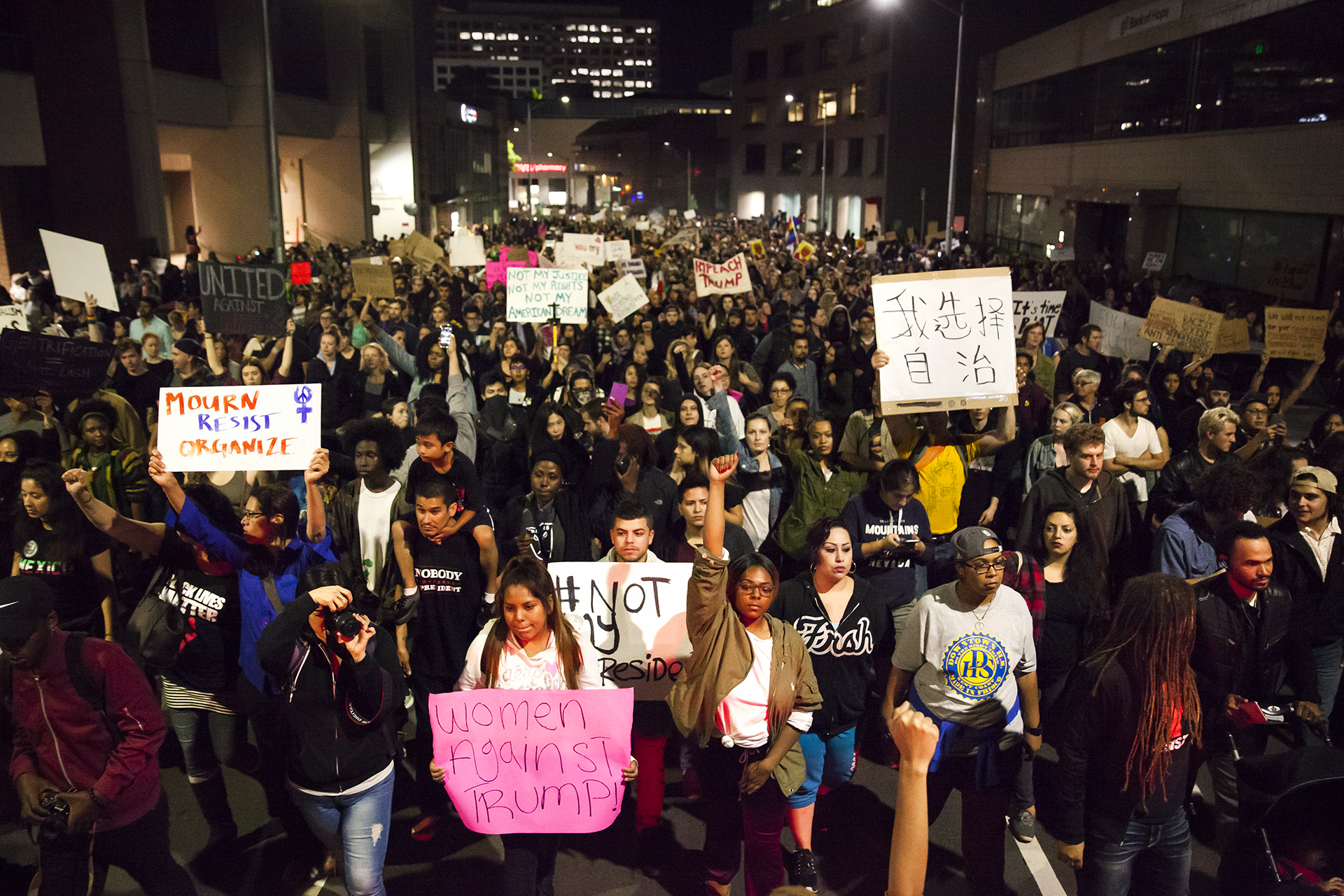At Sonoma State University, school staff and campus police officers recently participated in a preparation exercise with local and state agencies.
Some states have National Guard troops on standby, including Washington and Oregon, where officials say hundreds of ballots were damaged or destroyed after three ballot boxes were set on fire.
So far, Gov. Gavin Newsom has not taken similar precautions, though his department is coordinating with the secretary of state and the attorney general’s office, as well as federal, state and local law enforcement agencies to ensure potential demonstrations remain peaceful.
“Californians’ right to vote, demonstrate peacefully, and live safely and free from violence, intimidation and fear are core democratic values that our state will always stand ready to protect,” Newsom’s office said in a statement.
The Bay Area is no stranger to mass demonstrations, and public safety experts say there are a number of ways participants can keep themselves safe, including making a plan ahead of time.
“Suss out the location that you’re going to for the protest. Understand what precautions have been put in place, understand that location in terms of exits and where you will be situated,” said Stephanie Cyr, faculty lecturer of personal defense at San Francisco State University.
If you’re out there, she said, stay aware and use your internal alarm system, as things can change quickly.
“Listen to your gut. Take a look around. Always, even when you’re relaxed and alert, you should be scanning your environment,” she said.
If a protest turns violent, Cyr’s advice is simple: run.


